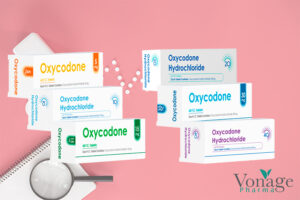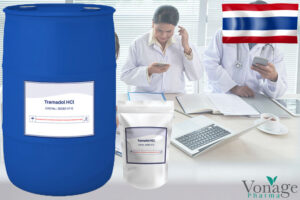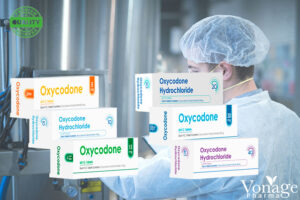Introduction
Post-traumatic stress disorder (PTSD) remains a significant public health concern, as up to 6% of the population experience it at some point in their lives. However, conventional pharmacotherapies often yield partial or insufficient relief in many patients. Consequently, this reality highlights the growing demand for innovative and safe adjunctive therapies.
In this landscape, low dose naltrexone (LDN) is emerging as a compelling option, drawing attention from both researchers and pharmaceutical providers. This post explores the latest statistics, clinical evidence, and the role of Vonage Pharma’s products in addressing this unmet need.
What is Low Dose Naltrexone (LDN)?
Low dose naltrexone typically refers to oral administration of naltrexone in doses ranging from 1–4.5mg per day—considerably lower than the 50mg dose commonly used for opioid or alcohol dependence. At these doses, LDN exhibits unique immunomodulatory properties, reduces neuroinflammation, and potentially alters the central nervous system’s response to trauma-related stress, making it an investigative therapy for PTSD.
Efficacy of Low Dose Naltrexone in PTSD and Related Disorders: Key Statistics
While large-scale randomized controlled trials in PTSD populations are ongoing, recent data from studies in chronic pain, fibromyalgia, and neuropathic pain—conditions often comorbid or overlapping with PTSD—provide statistical support for LDN’s therapeutic benefit:
-
In an open label study covering multiple neuropathic conditions, 65% of patients perceived significant benefit in pain symptoms after LDN treatment, a promising figure considering most had failed conventional therapies (Pubmed).
-
A 2025 trial reviewing LDN’s impact on chronic pain using a Visual Analogue Scale (VAS) showed statistically significant reductions in patient-reported pain at follow-ups. Notably, no significant side effects were reported, with mild issues such as abdominal discomfort or vivid dreams being rare and transient (Pubmed).
-
A follow-up randomized controlled trial (RCT) in fibromyalgia, which shares neuroinflammatory features with PTSD, revealed a 32.5% reduction in symptom scores for LDN users versus 2.3% for placebo (P<0.003). Additionally, successful response—defined as >30% reduction in pain and fatigue—was seen in 32% of the LDN group compared to 11% of the placebo group (P=0.05) (OUP.com).
Pediatric and Chronic Use Data
-
One case series noted rapid, sustained improvement in neuropathic pain syndromes, with patients regaining mobility and quality of life.
-
Across published studies, side effects were minimal and rarely led to discontinuation or any significant adverse events—an important consideration given the long-term nature of PTSD treatment.
Low Dose Naltrexone PTSD: Mechanisms and Pharmacology
LDN’s promise in PTSD is partly due to its dual action:
-
Antagonizes opioid receptors at low levels, resulting in a compensatory increase of endorphins, promoting improved mood and resilience.
-
Modulates the immune system, specifically by acting on microglia, thereby reducing inflammation and neurotoxicity implicated in PTSD pathogenesis.
Safety Profile and Tolerability
-
Mild gastrointestinal complaints and unusual dreams are the most common side effects, reported in less than 10% of users.
-
No serious adverse events, hepatic toxicity, or dependency have been observed in short- and mid-term studies.
-
LDN is considered suitable for long-term use, but pharmacovigilance and ongoing monitoring are recommended for all patients.
Low Dose Naltrexone in Clinical Practice: Individualizing Treatment
-
Initiate with 1mg daily, titrating up to 4.5mg as tolerated.
-
Typically administered at night due to possible mild sleep effects.
-
Monitor for subjective improvements in PTSD symptoms, pain, sleep, and overall quality of life.
Vonage Pharma: Supplying High-Quality Naltrexone for Providers
Vonage Pharma supports pharmaceutical providers and clinics with:
-
Naltrexone HCl API: High-grade, GMP-compliant active pharmaceutical ingredient for compounding.
-
Naltrexone 50 mg capsules: Precision-manufactured, consistent tablets that can be further compounded into low-dose capsules or solutions suitable for LDN protocols.
These products are designed to facilitate flexible dosing, meet the growing demand for LDN, and adhere to rigorous safety and quality standards.
Statistics Summary Table
| Outcome | % LDN Patients Improved | % Placebo/Control | Reference |
| Pain improvement (VAS/Fibro) | 32–65% | 2–18% | Pubmed |
| Responders (>30% relief) | 32% | 11% | OUP.com |
| Discontinuation due to AEs | <5% | ~0% | Pubmed |
| Significant adverse events | 0% | 0% | Pubmed |
Future Directions
Emerging clinical trials are expected to further clarify LDN’s efficacy specifically in PTSD. Current statistics, however, indicate real and substantive benefits for patients with trauma-related or comorbid pain syndromes—an encouraging sign for providers looking to expand therapeutic options.
Conclusion
For pharmaceutical providers, low dose naltrexone ptsd therapies represent a safe, flexible, and statistically supported avenue for care. Therefore, with Vonage Pharma’s high-quality naltrexone products, you can confidently support prescribers and ultimately promote better patient outcomes.







